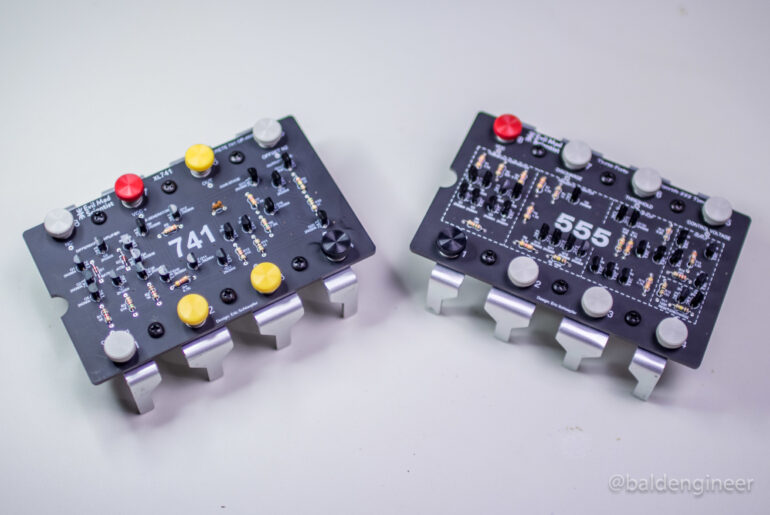Video Do electrons flow from positive to negative? Or do they flow from negative to positive? This AddOhms tutorial looks at the difference between Conventional Flow and Electron Flow. James also addresses whether or not his drawings are incorrect. Current Flow Direction Show Notes Ben Franklin by Duplessis 20 [via wikicommons] Four Current Flow Myths 68 [via baldengineer.com]
Video Switching regulators make use of the energy storage properties of capacitors and inductors. A transistor, or switch, controls the charging and discharging. This method makes for an efficient regulator but can be difficult to design. Show Notes Here are links to the products mentioned in AddOhms #18: LM3671 Buck Controller from Texas Instruments LM3671 Breakout board from Adafruit PowerBoost 1000 (boost converter) from Adafruit VERTER (buck-boost converter) from Adafruit These are articles related to…
Using Push-buttons with a microcontroller like an Arduino or Launchpad is made much easier with “Pull-Up Resistors.” See how they work and why you need them in this video tutorial.
https://youtu.be/ocN2oTsYIG8 National Instruments (NI), is probably best known for the LabVIEW software and modular instruments. In the past few years, they have introduced more innovative test and measurement products than any other T&M manufacturer, at least, in our opinion. Their latest box is called the “VirtualBench.” It’s a lab’s worth of equipment in a single box at a reasonable price. It combines a DMM, Oscilloscope, Logic Analyzer, Power Supply, and Function Generator into a single…
https://youtu.be/EQtwsWJuUPs Understanding voltage dividers means understanding Ohm’s Law. A common use for a voltage divider in most projects is to monitor a battery. Say you are powering your circuit with a 9V or 12V battery. Microcontroller boards don’t do well with those voltages. In a future video, we’ll come back and look at more circuits that can use voltage dividers. Episode Notes Correction: There is a mistake around 3:00. I say “91 millivolts” and I should…
https://youtu.be/8ua7dkTLGII A first look at the new Raspberry Pi B+ and some highlights on the differences from the first models. The other day I got an interesting email. It offered me a raspberry pie. The sender claimed it was only a “B+”, but hey, who am I to turn down free pie!? Jokes aside… In this AddOhms episode, I give some first impressions of the new Raspberry Pi Model B+. It isn’t an all-new board,…
https://youtu.be/GrvvkYTW_0k Following up from Episode #10 on BJTs, this episode is focused on introducing MOSFETs. It is the longest video we’ve done yet, coming in just over 7 and a half minutes. There is a basic overview of how MOSFETs work, compared to a BJT. And something that is really important to consider: how hot is it going to get? So we go through how to calculate power dissipation and if you need a…
When asking questions in a forum, like the Arduino forum, it is important to Post Your Code! It is so difficult to help without seeing what you intended. This was a team effort from the members of the Arduino forum. First, all of the people who help answer questions, of which, there are too many to list. The real credit goes to wildbill and Grumpy_Mike. wildbill wrote the original lyrics and Grumpy_Mike put them to…
https://youtu.be/sRVvUkK0U80 The two most popular kinds of transistors you might use for a project are either BJTs or MOSFETs. With so many options, it was tough to pick just a few. We covered the 2n3904 in this video. What BJTs are your favorites and why? Leave a comment below. Transistors are electronic switches that are used to control things that would kill an Arduino, Raspberry Pi, or Beaglebone. There are two major types known…



